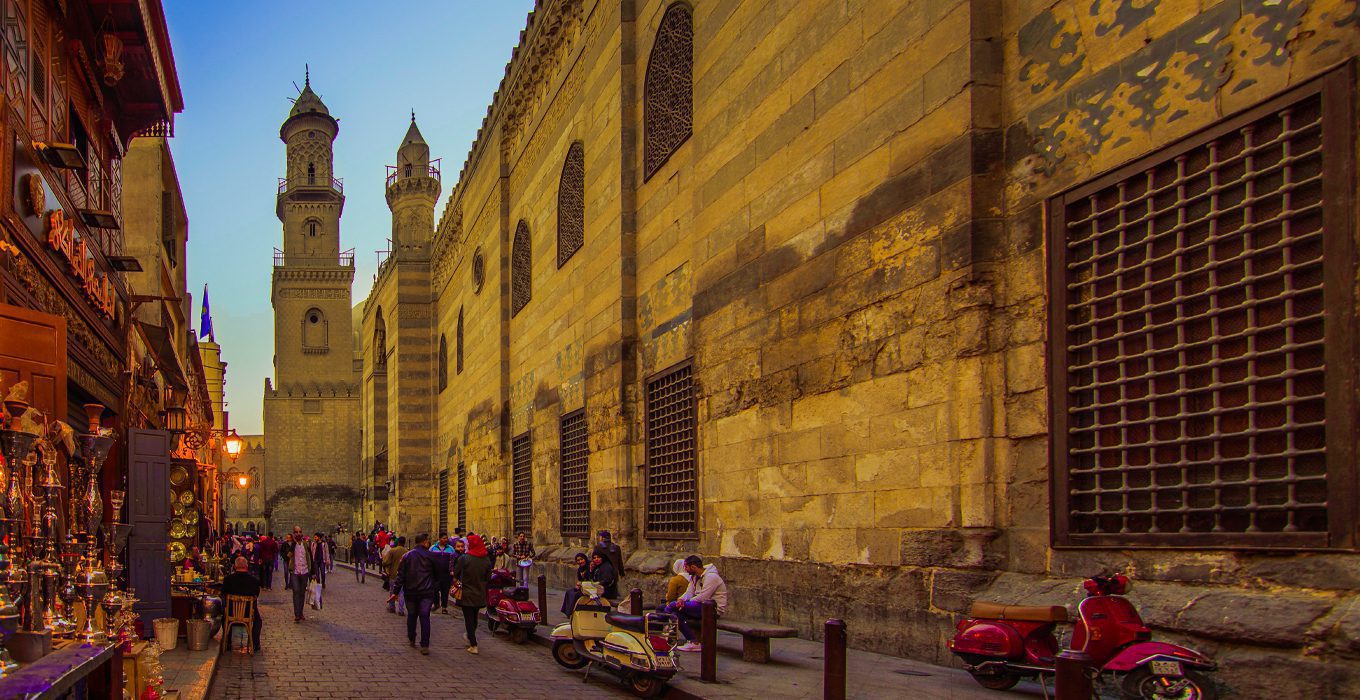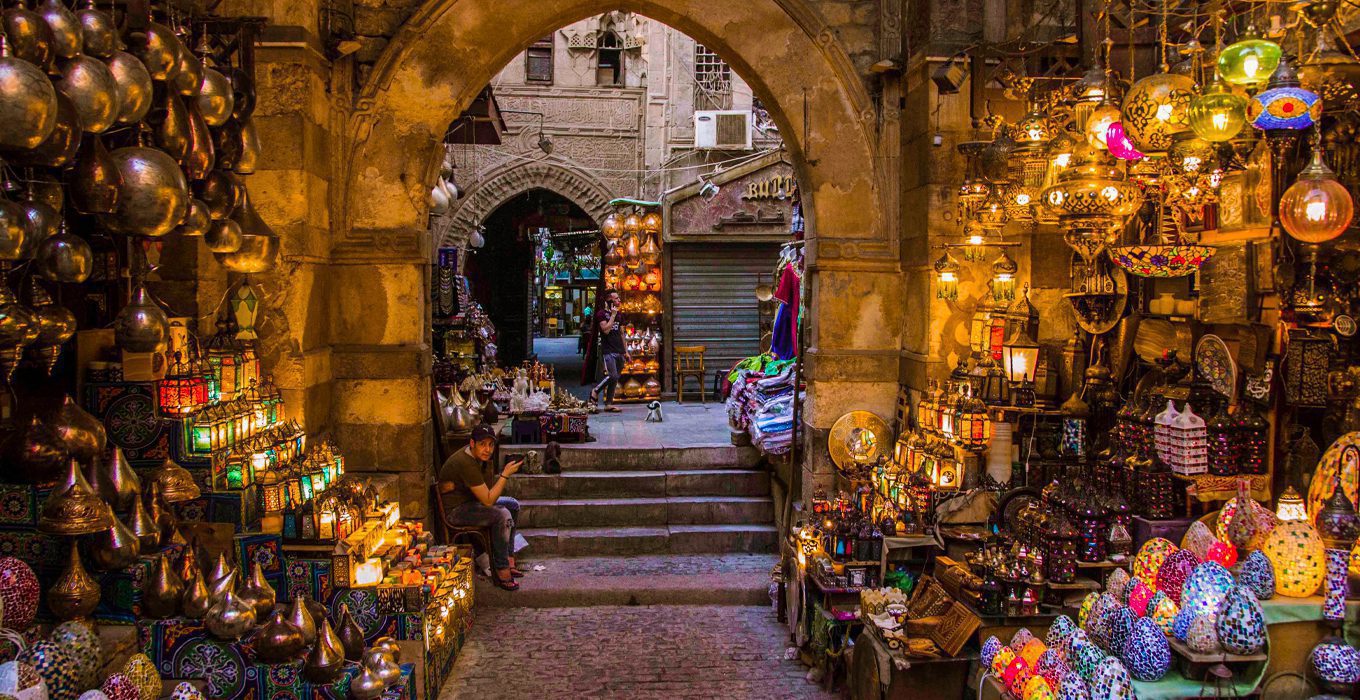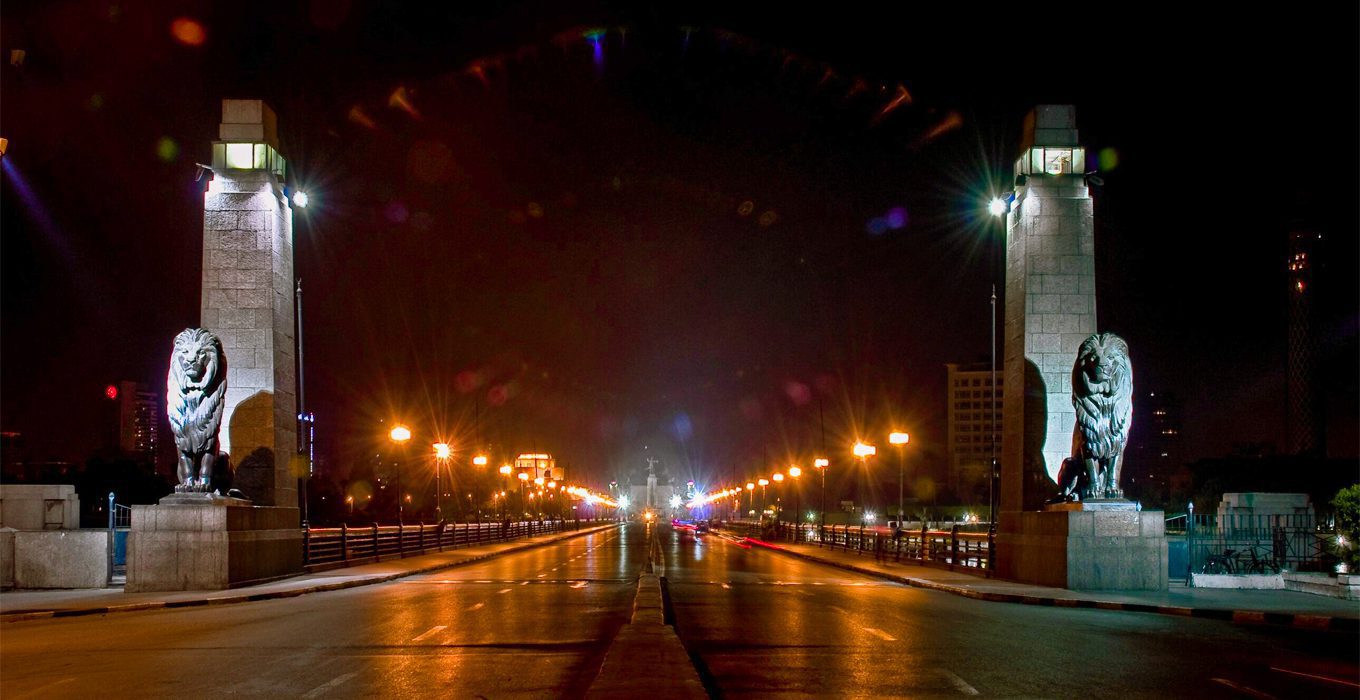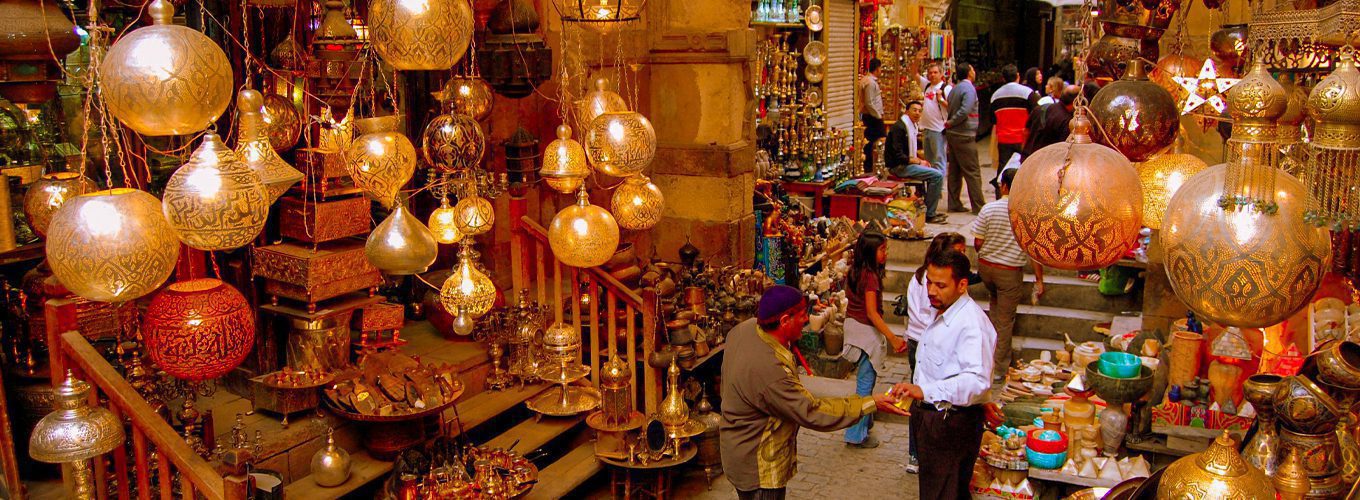Welcome, fellow wanderers, to a virtual journey through the bustling and labyrinthine streets of Cairo, a city that pulsates with history, culture, and an indomitable spirit. As we embark on this exploration, we’ll navigate the vibrant tapestry of this ancient metropolis, where the past seamlessly weaves into the present, creating a rich and captivating mosaic.
Cairo, the capital of Egypt, stands as a living testament to the intertwining threads of civilizations that have shaped its identity over centuries. From the grandeur of the Giza Pyramids to the narrow alleyways of Islamic Cairo, every cobblestone and bustling market stall tells a tale of resilience, innovation, and the ebb and flow of time.

1- Cairo Streets: Talaat Harb Street
Talaat Harb Street is a prominent thoroughfare located in the heart of Cairo, Egypt. Named after the Egyptian economist and nationalist Talaat Harb, the street is known for its historical significance, commercial activity, and cultural attractions.
Talaat Harb was a key figure in the early 20th-century Egyptian nationalist movement and played a crucial role in developing the country’s economy. The street that bears his name is a bustling urban center with commercial, cultural, and residential establishments.
Some notable features of Talaat Harb Street include:
- Cultural and Historical Sites: The street has several historic buildings and landmarks, including theaters, cinemas, and institutions showcasing Egypt’s rich cultural heritage.
- Shopping and Commercial Centers: Talaat Harb Street is known for its vibrant shopping scene. It hosts a variety of shops, boutiques, and commercial centers where locals and tourists can explore and shop for a wide range of products.
- Restaurants and Cafés: The street is dotted with restaurants and cafés, offering a diverse selection of Egyptian and international cuisine. It’s a popular spot for locals and visitors to enjoy a meal or relax with coffee.
- Business and Finance: Talaat Harb Street is also known for its importance in the business and financial sectors. It has been a hub for various businesses and financial institutions.
- Architectural Charm: The street features a mix of architectural styles, reflecting different periods of Egypt’s history. From modern buildings to classical architecture, Talaat Harb Street provides a visual journey through time.
Overall, Talaat Harb Street is a multifaceted urban hub combining commerce, culture, and history, making it a significant and dynamic part of Cairo’s urban landscape.
2- Cairo Egypt Streets: Al Muizz Street

Al-Muizz Street, also known as Al-Muizz li-Din Allah al-Fatimi Street, is one of the oldest streets in Cairo, Egypt, and is renowned for its rich history and architectural heritage. The street runs through the heart of Islamic Cairo, an area that is home to many historical Islamic monuments and buildings.
Here are some key features and attractions associated with Al-Muizz Street:
- Historical Significance: Al-Muizz Street has a history dating back to the Fatimid era (10th-12th centuries) and is considered one of the most important streets in medieval Cairo. It played a significant role in the city’s development and was a hub of economic and cultural activity.
- Architectural Diversity: The street has a remarkable collection of Islamic architectural masterpieces from different historical periods, including mosques, madrasas (educational institutions), and mausoleums. The buildings showcase a variety of architectural styles, including Fatimid, Mamluk, and Ottoman influences.
- Religious Monuments: Some of the notable religious landmarks along Al-Muizz Street include the Al-Hakim Mosque, the Al-Azhar Mosque (an important center of Islamic learning), and the Qalawun Complex, which consists of a mosque, hospital, and mausoleum.
- Markets and Bazaars: The street is also known for its traditional markets and bazaars, where visitors can experience the vibrant atmosphere of Cairo’s commerce. The Khan el-Khalili market, located nearby, is a popular destination for shopping and exploring local crafts.
- Restoration Efforts: In recent years, there have been extensive restoration efforts to preserve the historical buildings and monuments along Al-Muizz Street. These efforts aim to maintain the street’s cultural and architectural heritage for future generations.
- Cultural and Social Activities: Al-Muizz Street is not only a historical site but also a place where cultural events and festivals occur. It attracts tourists, scholars, and locals interested in exploring the city’s Islamic heritage.
Visiting Al-Muizz Street provides a unique opportunity to immerse oneself in the rich history of Cairo and witness the architectural and cultural legacy of Islamic civilizations in the region.
3- Streets in Cairo: Al-Azhar Street
Al-Azhar Street is a significant thoroughfare in Cairo, Egypt, known for its historical, cultural, and educational importance. The street is named after Al-Azhar Mosque, one of the world’s oldest and most prestigious Islamic institutions, located along its path. Here are some key features associated with Al-Azhar Street:
- Al-Azhar Mosque: Al-Azhar Mosque, established in 970 AD, is one of the oldest mosques in Cairo and serves as the centerpiece of Al-Azhar Street. The mosque is not only a place of worship but also the focal point of Al-Azhar University, one of the oldest universities in the world.
- Educational Hub: Al-Azhar Street is lined with educational institutions, libraries, and schools associated with Al-Azhar University. The street has been a center for Islamic learning and scholarship for centuries, attracting students and scholars from various parts of the Islamic world.
- Historical Landmarks: Besides Al-Azhar Mosque, the street is home to other historical landmarks and Islamic monuments. These include mosques, mausoleums, and structures with architectural significance that contribute to Cairo’s cultural and historical tapestry.
- Cultural and Religious Events: Al-Azhar Street hosts various cultural and religious events, especially during Islamic festivals and important religious occasions. The street becomes a focal point for celebrations and gatherings, attracting locals and visitors.
- Marketplaces and Commercial Activity: The street is characterized by bustling marketplaces and commercial activities, with shops and stalls offering a variety of goods. It provides a lively and vibrant atmosphere, and visitors can explore traditional markets and purchase local products.
- Architectural Diversity: Al-Azhar Street features a mix of architectural styles, reflecting the various periods in Cairo’s history. The street showcases the city’s rich architectural heritage from the classical Islamic architecture of Al-Azhar Mosque to the surrounding structures.
- Community and Social Life: The street is a hub for the local community, and its sidewalks are often filled with people going about their daily lives. It’s a place where residents and visitors can experience the cultural richness of Cairo.
Al-Azhar Street is not only a physical pathway but a symbolic and cultural artery that connects the past with the present, emphasizing the enduring importance of Islamic education and heritage in the heart of Cairo.
4- Street in Cairo: Darb Al Asfar Street
The majority of this region is devoted to producing leather goods, crafts, and commerce. This particular street is popular among tourists for a variety of compelling reasons. This particular street in Cairo is home to some one-of-a-kind stores that offer drums and other props for the entertainment industry.
In addition to being incredibly colorful, it is filled with many stores stocked with various things, including fancy garments, teapots, potteries, wooden tables, chairs, and dancer costumes. You will also discover some businesses that offer sheesha in a variety of shapes and sizes, in addition to that. It is possible to get tobacco and pipes of a very high grade.
5- Street in Cairo Egypt: Khan El-Khalili Street

Khan El-Khalili is not a street but a historic market district in the heart of Islamic Cairo, Egypt. It is one of the oldest and most famous markets in the Middle East, with a history dating back to the 14th century. The area is known for its narrow winding streets, bustling bazaars, and vibrant atmosphere.
The market is named after Emir Djaharks El-Khalili, a powerful figure during the Mamluk Sultanate in the 14th century. Khan El-Khalili has been a center of trade and commerce for centuries, attracting merchants, traders, and tourists. It is a popular destination for locals and visitors to experience Cairo’s traditional sights, sounds, and flavors.
Within Khan El-Khalili, various shops sell traditional crafts, textiles, jewelry, spices, and Egypt souvenirs. The market is also home to numerous coffee shops, restaurants, and street food vendors where you can taste authentic Egyptian cuisine. The area is characterized by its medieval Islamic architecture, with many buildings dating back to the Mamluk and Ottoman periods.
Visitors to Khan El-Khalili can immerse themselves in the rich history of Cairo, explore the narrow alleys, and enjoy the vibrant atmosphere of this historic market district. It’s where you can witness the blending of modern and traditional Egypt, making it a must-visit for anyone exploring Cairo’s cultural and historical attractions.
6- Streets in Cairo Egypt: Al-Ghouria Street
Al-Ghouria Street, also known as Sharia al-Attarin in the past, is a vibrant historical street in the heart of Islamic Cairo, Egypt. It stretches from Al-Muizz li-Din Allah Street to Al-Azhar Street and is considered a living museum of Mamluk architecture.
History and Significance:
- Founded by Sultan Qansuh Al-Ghouri in the 16th century, the street was originally called Al-Attarin, meaning “the perfumers.” This name reflected the abundance of shops selling perfumes, herbs, and spices lined the street.
- Historically, the street was a major commercial center, attracting merchants from the East and West. The Al-Ghouri Agency, a magnificent Mamluk caravanserai, served as a meeting point for these merchants and remains a landmark of the street today.
Al-Ghouria Street is also home to several important religious and historical sites. The most notable among them are:
- Maqam, Sabil, and Kuttab Al-Ghouri: A complex comprising a tomb mosque, a public fountain, and a religious school built by Qansuh Al-Ghouri.
- El-Ghouri Mosque: A stunning example of Mamluk architecture featuring intricate stonework, colorful mosaics, and a beautiful dome.
Book Tanoura Dance Show at Wekalet El Ghouri with Local Dinner
7- Cairo Streets: El-Haram Street in Cairo
El-Haram Street, also known as Haram Street, is a significant thoroughfare in Cairo, Egypt. The street is famous for being the location of the Giza Plateau, home to the iconic pyramids and the Sphinx. The Giza Plateau is situated on the outskirts of Cairo, and El-Haram Street is one of the main routes leading to this historical and archaeological site.
Tourists and locals alike often use El-Haram Street to access the Giza Pyramids and the Sphinx, among the most renowned ancient monuments in the world. The street is surrounded by a vibrant atmosphere with shops, markets, and various establishments catering to visitors’ needs.
In addition to its historical significance, El-Haram Street plays a crucial role in connecting different parts of Cairo, serving as a busy thoroughfare in the city. It provides access to the area’s various neighborhoods, businesses, and amenities.
The street is named after the Arabic word “haram,” which means “forbidden” or “sacred.” This name reflects the religious and cultural importance of the Giza Plateau and its ancient structures. Visitors to Cairo often include a visit to El-Haram Street and the Giza Plateau as part of their itinerary to experience Egypt’s rich history and culture.
8- Cairo Egypt Streets: Qasr El Nil Street

Qasr El Nil Street is another notable street in Cairo, Egypt. This street holds historical, cultural, and political significance. It is located in the heart of Cairo and runs along the east bank of the Nile River. Here are some key features and points of interest associated with Qasr El Nil Street:
- Tahrir Square: Qasr El Nil Street is closely linked to Tahrir Square, one of Cairo’s most iconic and symbolic public squares. Tahrir Square has been a focal point for various historical events and political demonstrations, including the 2011 Egyptian Revolution.
- Egyptian Museum: The renowned Egyptian Museum, home to an extensive collection of ancient Egyptian artifacts and treasures, is near Qasr El Nil Street. The museum is a must-visit for those interested in Egypt’s rich history and archaeological heritage.
- Qasr El Nil Bridge: The street is known for the Qasr El Nil Bridge, which spans the Nile River and connects Cairo’s east and west banks. The bridge offers stunning views of the river and the cityscape.
- Cultural Institutions: Qasr El Nil Street is home to various cultural institutions, government buildings, and hotels. The area has historically been associated with political and cultural activities.
- Luxury Hotels: The street features several luxury hotels, making it a convenient location for tourists seeking accommodation in central Cairo.
- Government Buildings: Qasr El Nil Street is lined with government buildings and institutions, contributing to its role as a central hub for administrative and political activities.
Overall, Qasr El Nil Street is a significant thoroughfare that reflects Cairo’s dynamism and historical importance. It has witnessed pivotal moments in Egypt’s modern history and is a central location for various cultural, political, and social activities.
9- Streets of Cairo: Mohammed Mazhar Street
A prominent Egyptian engineer, Muhammed Ali Pasha, selected to be among the students sent for the first scholarship in Paris to study marine engineering in 1826, is honored with the naming of this street, considered one of the most exquisite avenues in the Zamalek area. Currently, the street is home to several embassies, including the embassies of Algeria and Iraq. Additionally, it is the location of Princess Samiha Palace, which was once the residence of Sultan Hussein Kamel’s daughter. Subsequently, the palace was converted into the Greater Cairo Public Library, which includes all of the content written about Cairo from the city’s inception.
10- Cairo Streets: Al-Saliba Street
Al-Saliba is one of the most important old streets in Islamic Cairo from the Middle Ages. Salah al-Din Square, also called Citadel Square, is at the beginning of the street. It goes all the way to al-Sayyida Zeinab Square. Around 700 years ago, the street was named al-Saliba, which means “Cross Street” because it crossed many other streets. From the 14th century to the middle of the 16th, al-Saliba was lined with government buildings and the homes of Egypt’s top leaders.
From the convoys of Sultans to state parties and even plans by Mamluk masters against each other, this historic street saw a lot of important political, social, and historical events. Many kings lived in al-Saliba and built military facilities, like a military school and shops for making weapons and rifles.
Along this one street, you can find a wide range of Islamic buildings, such as mosques, schools, kuttabs (places to learn the Quran), sabils (public water fountains), khanqas (places where Sufis meet), hammams (baths), and castles. The whole street is like an outdoor museum of Islamic Cairo’s beauty. The Ahmed ibn Tulun Mosque, Bayt al-Kritliyya, and Sabil-Kuttab Um ‘Abbas are some of the most important spots on the street.
